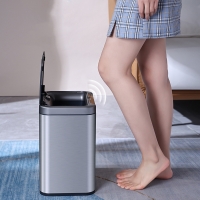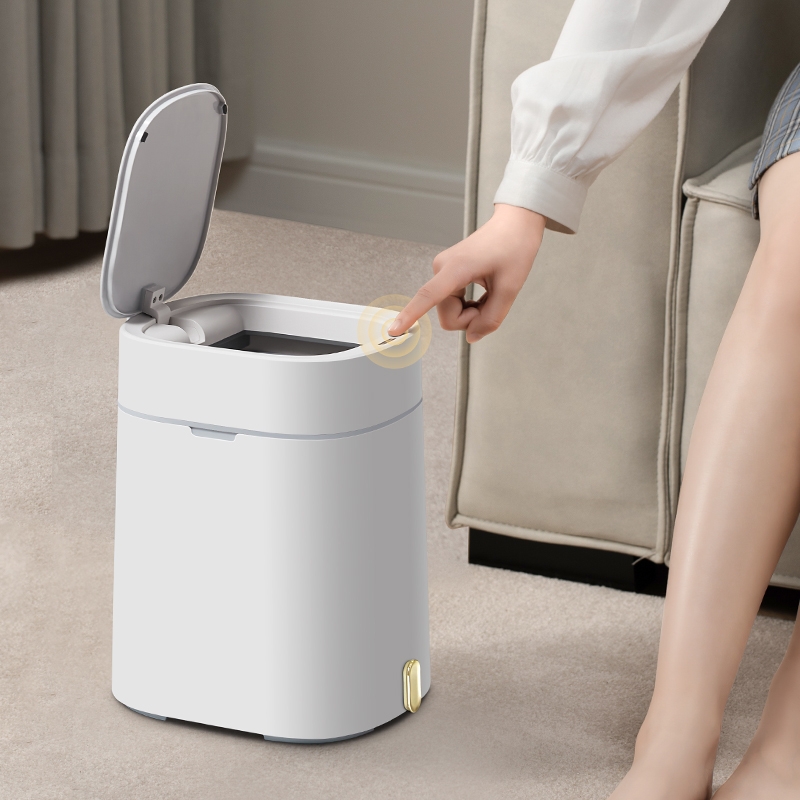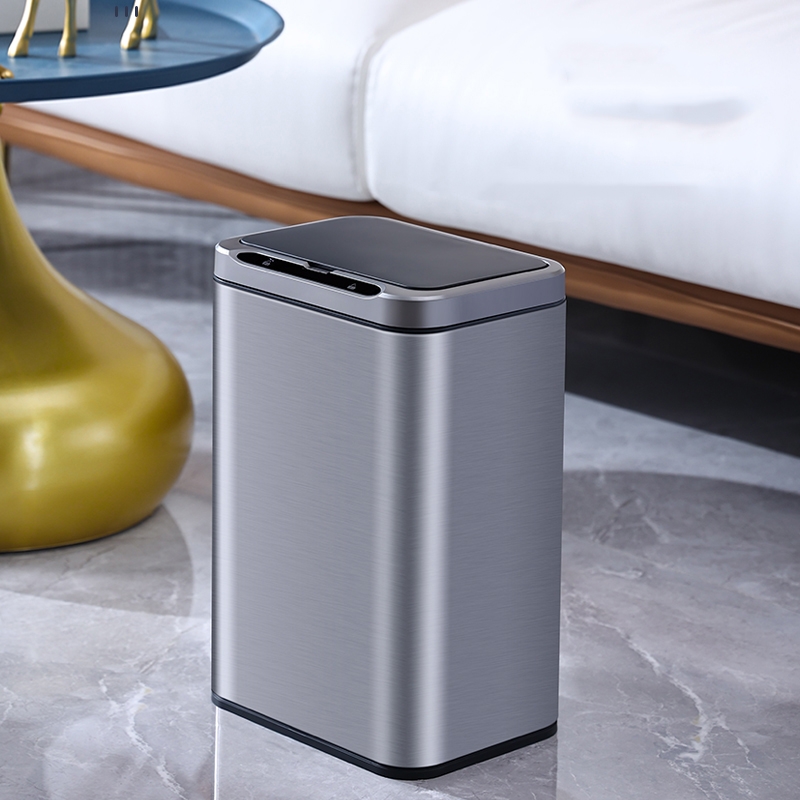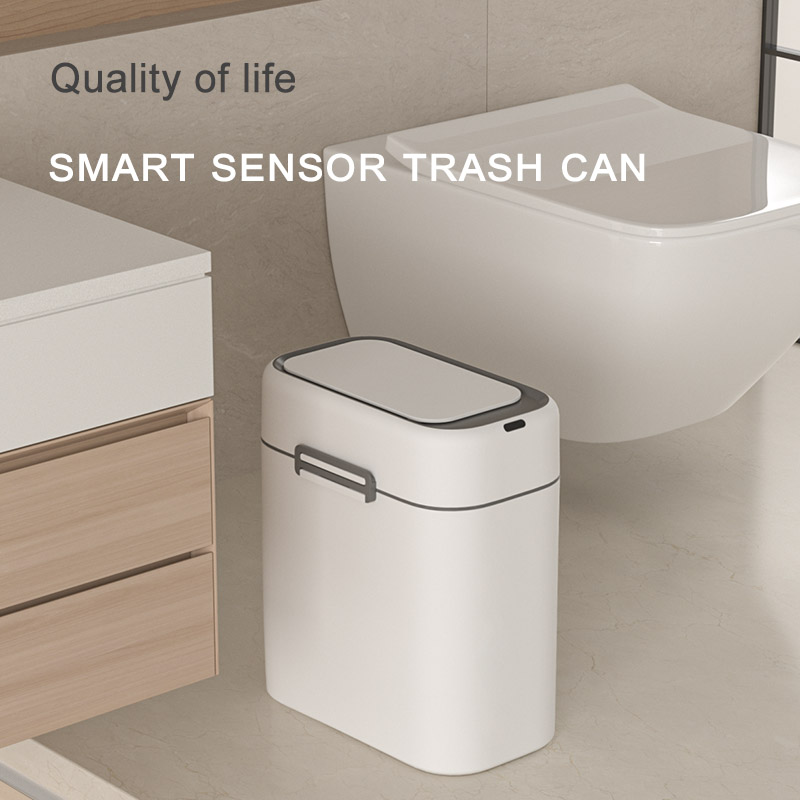what is a smart trash can
05-13-2025
A smart trash can is a waste container that incorporates advanced technologies to enhance waste management efficiency, convenience, and sustainability. Here are its main features and functions:
Sensor-based operation
Motion or proximity sensors: Most smart trash cans are equipped with infrared or ultrasonic motion sensors. These sensors can detect a person approaching within a certain range, usually 15 - 30 centimeters. Once detected, the lid of the trash can smoothly glides open in less than a second, enabling hands-free waste disposal. For instance, in a busy hospital or restaurant, where hygiene is of utmost importance, this feature helps reduce the spread of germs. After the trash is thrown in, the lid automatically closes within 3 - 5 seconds, effectively containing any unpleasant odors and preventing pests from accessing the waste.
Fill level sensors: Advanced smart trash cans utilize a variety of fill level sensing technologies, such as ultrasonic, laser, or weight - based sensors. Ultrasonic sensors, for example, emit high - frequency sound waves and measure the time it takes for the waves to bounce back from the surface of the waste. This allows them to accurately determine the fill level of the bin, even with irregularly shaped items. When the trash can reaches around 80% of its capacity, it sends an alert to the control center or the user's mobile device. This real - time information enables waste collection services to optimize their routes, reducing fuel consumption and operational costs, and also prevents overflowing bins in public areas.
Connectivity
Internet of Things (IoT) integration: Many smart trash cans are integrated with IoT technology, enabling seamless communication with other devices and systems. They can connect to Wi-Fi networks, and some even support cellular or Bluetooth connectivity for more flexible deployment. Once connected, these trash cans can share data with waste management systems, property management platforms, or dedicated mobile apps. For example, a city's waste management department can monitor the status of all smart trash cans across the city in real - time through a centralized dashboard. This allows them to quickly identify areas where collection is needed, dispatch resources promptly, and improve overall waste management efficiency.
Data analytics
Behavior analysis: The data collected from smart trash cans, including fill levels, types of waste, and disposal times, offers valuable insights when analyzed. By tracking the fill levels over time, waste management teams can identify peak usage hours and days, which helps in adjusting collection schedules accordingly. For example, if data shows that a particular area has a high volume of waste on weekends, additional collections can be scheduled during those times. Analyzing the types of waste can also reveal trends in recycling rates and waste generation. This information can be used to launch targeted recycling campaigns or educational initiatives to encourage more sustainable waste disposal habits among the public.
Auto sorting and compression
Waste sorting: Some high - end smart trash cans leverage artificial intelligence and computer vision technologies for waste sorting. These cans are equipped with cameras and sensors that can identify different materials, such as paper, plastic, metal, and organic waste. Using machine learning algorithms, the system classifies the waste items and directs them to the appropriate compartments. In some advanced models, the sorting accuracy can reach up to 95%, significantly improving the recycling process and reducing the amount of mixed waste sent to landfills.
Compaction: Smart trash cans with built - in compactors use mechanical or hydraulic mechanisms to compress the waste. This reduces the volume of waste by up to 80%, increasing the capacity of the bin and extending the time between collections. In commercial settings like shopping malls or office buildings, where large amounts of waste are generated daily, compaction can save a significant amount of space and reduce the frequency of waste collection, resulting in lower costs and less disruption to daily operations.
Self-sealing and bag replacement
Self-sealing feature: High - end smart garbage cans are designed with self-sealing mechanisms that use heat or adhesive strips to seal the trash bag when it's full. This not only prevents odors from escaping but also stops leakage, keeping the surrounding area clean and hygienic. Some models are also equipped with odor - neutralizing filters that further enhance the air quality around the trash can.
Automatic bag replacement: The most advanced smart trash cans can automatically replace the old bag with a new one after sealing the full bag. This process is typically powered by a motorized system that unrolls a new bag from a storage roll and positions it correctly in the bin. Users no longer have to deal with the messy and unpleasant task of manually changing the trash bag, making waste disposal a more convenient and hassle - free experience.
Energy efficiency
Power sources: Smart trash cans are designed to be energy - efficient, with most operating on rechargeable lithium - ion batteries. These batteries can last for several months on a single charge, depending on usage. Additionally, many models feature low - power consumption modes, such as standby or sleep modes, which reduce power usage when the trash can is not in use. For outdoor smart trash cans, solar panels are commonly used as a power source. The solar panels convert sunlight into electricity, which is stored in batteries and used to power the smart functions of the trash can. This makes outdoor smart trash cans self - sufficient and environmentally friendly, with minimal maintenance requirements.
















